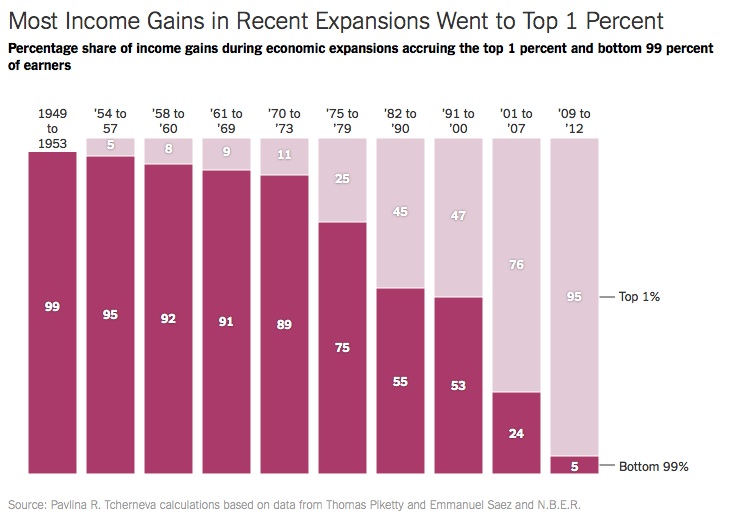Wines from Spain recently interviewed me for their May/June newsletter. The interview is copied here but can be read in its original form by clicking here.
Wines from Spain: How is the “Spanish wine category” today different from what it was, say, 10 years ago?
Jon Stamell: Over the past 10 years, Spain has become a major player in the U.S. wine market – new DO’s have been created, and both new and older DO’s have launched progressive marketing campaigns. The difference is incredible. If you went into a wine store ten years ago, you may not have seen a Spanish wine section, or it would’ve been very small. Now, there is a Spanish wine section in every store that is at least double what it was back then.
Are there certain Spanish regions or varietals that are experiencing significant growth right now? If so, which regions/ varietals?
I helped begin the Vibrant Rioja campaign in 2005 and watched them experience incredible growth. The interesting thing about Rioja is that now that it exports over 1 million cases to the U.S., its distribution numbers have dramatically increased. With this incredible growth, I expect the export numbers to grow to 3 million cases in less time than it took to get to 1 million. I think the new Ribera/Rueda campaign is going to have a similar effect on the regions of Ribera and Rueda.
There may be more diversity (in terms of wine) in Spain than there is in France or Italy, and as Americans continue to discover and learn about Spanish wines, demand will continue to rise.
Which regions or varietals do you think have the most potential for growth, considering the influence of the millennials on the US wine market?
Millennials look for great flavor and easy drinking, which means they need wines that are both balanced and well-structured. They’re also looking for products that are approachable, and that simultaneously set them apart from older generations. And, of course, they want all of this at a reasonable price.
Spanish wines fit that bill. Most of the reds don’t have the tannic qualities of new Bordeaux wines, so they’re often ready to drink when purchased. They are also more affordable than most wines from Bordeaux, Burgundy, and the other “big” European regions. Similarly, the whites offer incredibly reasonably-priced alternatives to California Chardonnay and Italian Pinot Grigio. White grapes like Viura, Verdejo, Albariño and Godello are bright, fresh, food friendly, and a little more “modern.” Plus, unlike Bordeaux and California, Spain is not deeply associated with millennials’ parents’ generation.
What trends are driving the wine market this year?
Compare a wine store or restaurant wine list today with one from just a few years ago. As more and more wine regions pop up and/or launch new marketing campaigns, the competition for well-established regions grows steeper. American wine drinkers are able to explore wines beyond the tried and true.
If they like them, they continue to buy them and that is diminishing brand and region loyalty as adventure and experimentation win increasing acceptance and become the dominant trends. This presents a challenge for importers who want to consolidate their portfolios but still offer sufficient variety so they can both satisfy older wine drinking habits but serve new ones too. It also is a difficult problem for retailers as they have limited shelf space with different types of consumers walking down the wine aisle. Their decisions of deciding what is going to sell are not getting easier. Notice that I did not mention “digital” as a trend. Yes, use of digital marketing is growing but it is a means to an end, a tactic to pursue a strategy. If you don’t have a strategy, the tool is not going to work for you. We see that too often.
Which trends or markets can Wines from Spain tap into in order to further accelerate their progress?
Money is still in the hands of aging boomers but it won’t be long before the oldest ones are senior citizens and their wine consumption declines. Younger boomers are trying to stay young and, as a result, are increasingly influenced by their kids (Gen X and Millennials) so they’re trying food and wine that may be new to them. Where I’m headed is that while marketing to boomers may be defensive, it’s a declining game. Every brand needs to stay young but be authentic at the same time.
That’s a problem confronting California and French wineries, while Spain is already positioned on the younger end of the scale even though it’s steeped in history and tradition. Spain shouldn’t take young wine drinkers for granted and should stay close to their interests, needs and motivations as they grow older.
What are some of the biggest challenges facing Wines from Spain?
Funding, consistency and commitment are the three biggest challenges. Money for marketing campaigns is always a challenge and that requires acceptance that marketing is an investment, not a cost. That can be difficult for countries where sales have not been traditionally linked to marketing. It has been proven time and again but there’s still resistance to that idea. Rioja is an obvious example for Spain but also look at the example of Glen Ellen in the 1990’s and Yellowtail in the 2000’s. Neither had vineyards or vinification facilities. They were great brands created by marketing. Connected to investing is being consistent in making a long-term commitment to marketing. Another proven fact is that when you stop marketing, your sales decline. The market forgets. There are simply too many options.
One of the presenters at the last VinItaly had a slide that read, “No one needs your wine,” and another that read, “If your wine did not exist, the people drinking it today would happily drink something else.” If I was in the wine business, I’d have those slides up on my wall.
What makes the Spanish wine category so unique, so special compared to other major wine-producing countries like France, Italy, or even the US?
I’ve listed a lot of things already: diversity, value, authenticity, etc. But what I haven’t noted and may be the greatest asset is the willingness for self-examination and adopting a new direction. Last year, I worked with ICEX and the Spanish Trade Commission here in New York to convene an advisory council of, most notably, leaders in distribution, retail, foodservice and education but not of producers. This showed a willingness to listen to the market and the advice from customers, not focusing only on the internal constituency in Spain. We’re currently conducting large consumer and trade market research, and this approach—to listen to the market and then make changes to align Spain with market needs—is going to pay great dividends in coming years.
Jon Stamell has been advising food and wine producers on marketing and strategy issues for nearly 30 years. He developed the successful Vibrant Rioja marketing campaign strategy and currently is consulting for Wines From Spain and ICEX in developing a new strategy for the American market.
Tags: Albariño, Baby Boomers, Bordeaux, Burgundy, California, Chardonnay, digital, French wine, Gen X, Glen Ellen, Godello, ICEX, Italian wine, Millennials, Pinot Grigio, Ribera, Rioja, Rueda, Spain, Spanish Trade Council, U.S. wine market, Verdejo, Vibrant Rioja, VinItaly, Viura, wine, Wines From Spain, yellowtail
 questions to and you’ve opened up your market research provider’s survey builder to create the survey. You may have done it dozens of times before; that is, begun a research project knowing that what you’ll get back is a group of conclusions about your group and segments of your group, which may be by any combination of demographic criteria.
questions to and you’ve opened up your market research provider’s survey builder to create the survey. You may have done it dozens of times before; that is, begun a research project knowing that what you’ll get back is a group of conclusions about your group and segments of your group, which may be by any combination of demographic criteria.















